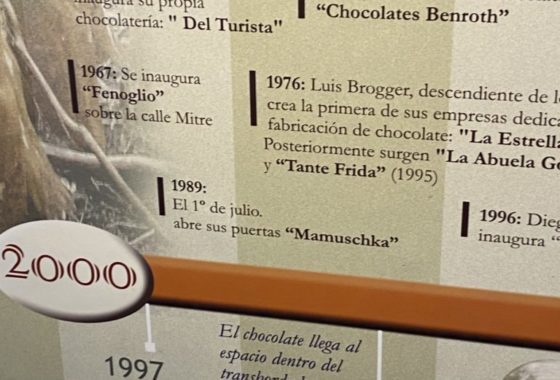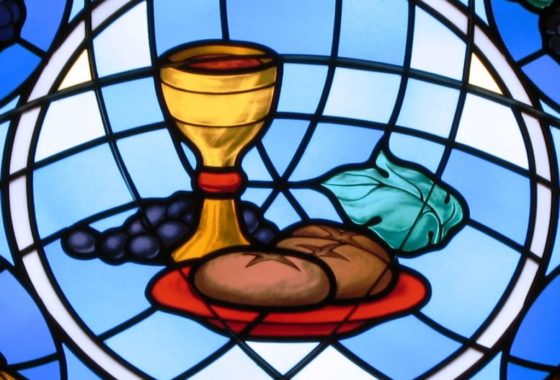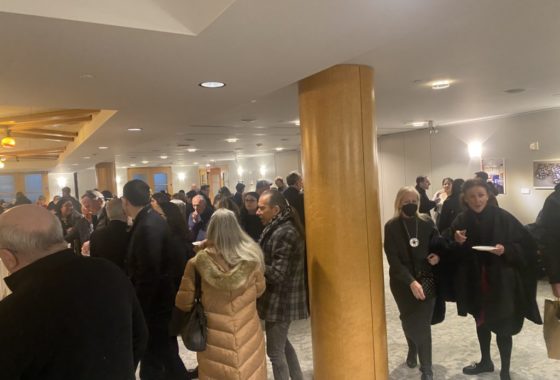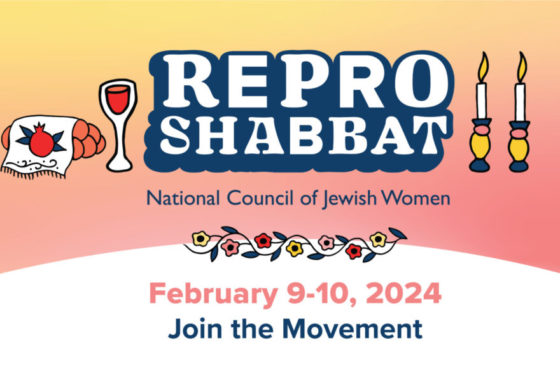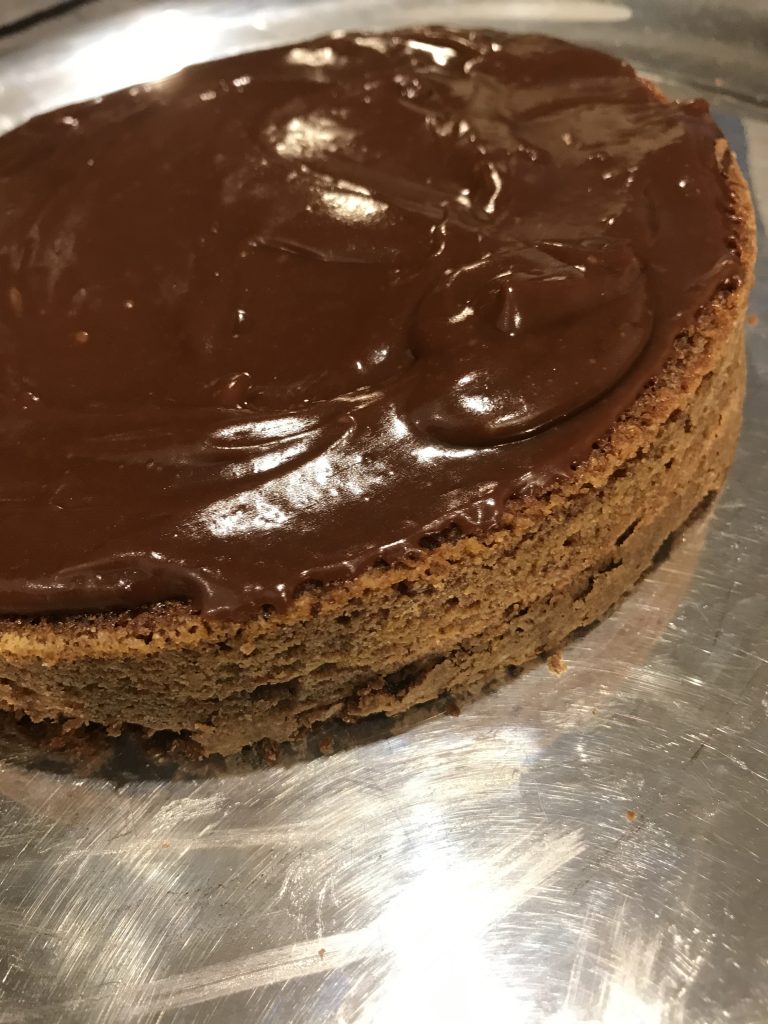
A Chocolate Cake for October’s Tricks: Devil’s Food
Heading into October and its culmination in Halloween, I find myself hankering for Devil’s Food Cake, despite its initially derogatory name. Supposedly in 1690 Pilgrims traveled to Plymouth Rock via Amsterdam. They stayed in a house near the city’s biggest chocolate houses and called that chocolate “the Devil’s food.” Later, a chocolate cake, perhaps simply a ball of ground chocolate prepped for drinking chocolate, became popular in Amsterdam. The local bakers named it “Devil’s Food.”
Mrs. Rorer’s New Cook Book by Sarah Tyson of 1902 seems to be the first American cookbook to list a recipe for a real cake known as Devil’s Food. The word devil had come to refer to spicy, stimulating, chocolate. Today, it is also known as red velvet or Waldorf Astoria Cake. Whatever its name and whenever its origins, now, I just think of our version of the cake* as devilishly tasty.
Devil’s Food Cake
INGREDIENTS:
1⁄2 cup milk (not nonfat)
1 tablespoon distilled white vinegar
4 ounces semisweet chocolate, chopped
1 stick unsalted butter, cut into pieces
1 cup water
2 cups all-purpose flour
1 teaspoon baking soda
1⁄2 teaspoon salt
2 cups sugar
2 large eggs
1 teaspoon vanilla
1 teaspoon espresso powder or instant coffee
(Instead of milk and vinegar, substitute 1⁄2 cup mayonnaise
FROSTING:
11⁄2 cups sugar
1 cup heavy cream
4 ounces unsweetened chocolate, chopped 1 stick unsalted butter, cut into pieces
1 teaspoon vanilla
Instructions:
FOR THE CAKE: Preheat oven to 350°F. Butter two 8-inch round cake pans with 2-inch-high sides and dust with flour, knocking out excess.
Stir together milk and vinegar and set aside to “sour” (mixture will curdle). Dissolve instant coffee or espresso powder into the warmed water. Melt chocolate and butter with coffee/espresso in a large metal bowl set over a saucepan of simmering water, whisking until smooth.
Cool slightly. Sift together flour, baking soda, and salt. Beat the sugar into the chocolate mixture with an electric mixer. Add the eggs, one at a time, beating well after each addition, then beat in the vanilla. Add the flour mixture and beat on low speed just until combined. Add the soured milk and beat on high speed for 2 minutes.
Divide the batter evenly between the cake pans. Bake in the middle of the oven until the tops of the layers spring back when touched lightly and the edges have just started to pull away from the sides of the pans, about 35–45 minutes. Cool the layers in the pans on wire
racks for 5 minutes. Run a thin knife around the edges of the pans, then invert the layers onto the racks to cool completely.
FOR THE FROSTING: Bring the sugar and cream to a boil in a heavy saucepan, stirring constantly, and simmer 10 minutes. Remove
from heat, and add the chocolate, butter, and vanilla, stirring until smooth. Transfer to a bowl and cool to room temperature, stirring occasionally. Chill the frosting, stirring frequently, until thickened and spreadable.
ASSEMBLE THE CAKE: Brush any loose crumbs from the layers, and put 1 layer upside down on a serving plate. Spread with about 1 cup of frosting. Place the other layer on top, right side up. Frost the top and sides of the cake with the remaining frosting.
Quantity: 8 servings
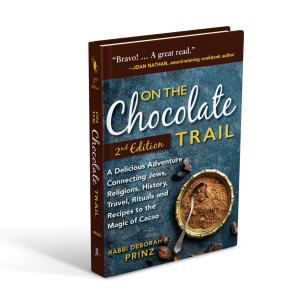 *tested with Hannah Gross
*tested with Hannah Gross
Recent Posts
-
On the Chocolate Trail in Bariloche, Argentina
In March, Mark and I finally extended our chocolate trail explorations in celebration of our special anniversary to Bariloche…via Miami, Buenos Aires, Ushuaia, Antarctica, and Buenos Aires again. There were international flights, a cruise, a couple of domestic flights to get there. All of the travel was amazing, but Bariloche, sometimes called the chocolate capital
Read more › -
Sunday Yeast Polemics: On the Bread Trail
Leavened bread or not? While some of us may think of Passover, the question applied to Eucharistic bread and created significant division in the early Christian Church. The leavened bread for Sunday use was often baked at home by women. Over time, preferences shifted to clergy, church-produced, breads… and, the Eastern Orthodox Church preferred a
Read more › -
Sweet Treat: Chocolate and the Making of American Jews
You may wonder: how did chocolate help define American Jews? Through chocolate, we see that Jews were part of America since its earliest days. Well, since 1701 at least, Jews in the Colonies made part of their living through chocolate. Several Sephardim, leaders of their New York and Newport Jewish and secular communities, participated in
Read more › -
How About Some Uterus Challah?
When Logan Zinman Gerber felt enraged about the loss of reproductive rights in the U.S., she baked challah. Not any challah. She shaped it into a uterus. It wasn’t long after the birth of her daughter that Gerber, a longtime challah baker and staff member of the Religious Action Center of the Reform movement, considered
Read more ›
Some Previous Posts
(in alphabetical order)
- "Boston Chocolate Party" Q&As with Deborah Kalb
- 2022 Media for The "Boston Chocolate Party"
- A Manhattan synagogue explores the rich, surprising history of Jews and chocolate
- About Rabbi Deborah Prinz
- Baking Prayers into High Holiday Breads
- Boston Chocolate Party
- Digging into Biblical Breads
- Exhibit Opens! Sweet Treat! Chocolate & the Making of American Jews
- For the Easiest Hanukah Doughnuts Ever
- Forthcoming! On the Bread Trail
- Funny Faced Purim Pastries
- Good Riddance Chameitz or, The Polemics of Passover's Leaven
- How About Some Uterus Challah?
- Injera*
- Jewish Heritage Month: Baseball & Chocolate!
- Matzah - But, the Dough Did Rise!
- Plan a Choco-Hanukkah Party: 250th Anniversary Tea Party
- Prayers Into Breads
- To Shape Dough: A Trio of Techniques
Archives
2025
▾- All
2024
▾- January
- February
- March
- May
- July
- All
2023
▾- March
- April
- May
- June
- August
- November
- December
- All
2022
▾- February
- April
- November
- December
- All
2021
▾- March
- April
- October
- November
- All
2020
▾- April
- May
- June
- October
- December
- All
2019
▾- January
- February
- April
- May
- July
- August
- September
- October
- December
- All
2018
▾- February
- March
- April
- May
- July
- September
- October
- November
- December
- All
2017
▾- January
- February
- March
- July
- September
- October
- November
- December
- All
2016
▾- January
- February
- March
- May
- July
- August
- October
- November
- All
2015
▾- January
- February
- March
- May
- June
- July
- September
- November
- All
2014
▾- February
- April
- May
- June
- August
- September
- November
- All
2013
▾- March
- April
- May
- June
- July
- September
- November
- All
2012
▾- January
- February
- March
- April
- September
- October
- November
- December
- All
2011
▾- April
- July
- August
- October
- November
- All
2010
▾- January
- February
- April
- July
- August
- September
- October
- All
2009
▾- January
- June
- July
- August
- October
- All
2008
▾- August
- September
- October
- November
- All
2007
▾- January
- June
- July
- All
2006
▾- November
- December
- All
